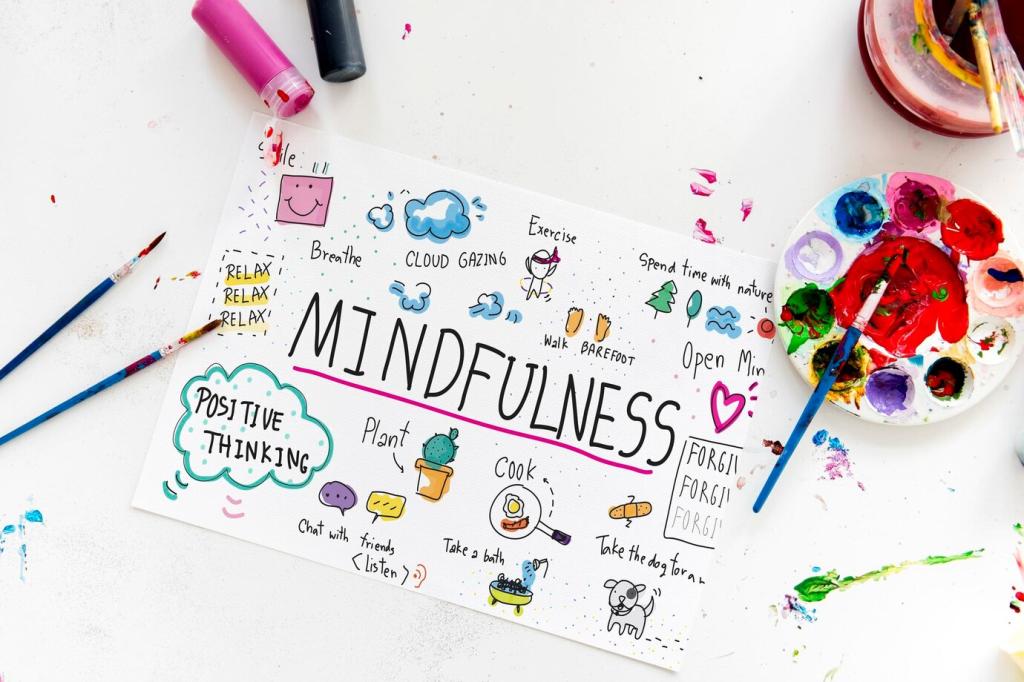Chosen theme: Visualization Strategies for Clear Thinking. Welcome! If your thoughts feel tangled, we’ll turn them into clear lines, shapes, and stories you can see, discuss, and improve. Subscribe and share your favorite visual tricks to help others think better.
Why Visuals Cut Through Mental Noise
How images lighten cognitive load
Working memory is tiny, especially under stress. Externalizing ideas into simple sketches reduces extraneous load, freeing attention for reasoning. Start with boxes and arrows before writing paragraphs or polishing slides. Comment with one cluttered idea you’ll sketch today.
Dual coding makes ideas memorable
Pair words with visuals to encode information along two pathways. A label plus a diagram sticks longer than either alone. Annotate diagrams with short verbs, not long sentences. Try it and report how your recall changes after a week.
A quick story: the sticky note epiphany
Our team argued for hours about priorities until someone lined tasks on a whiteboard timeline. Silence, then clarity. With order visible, trade‑offs felt obvious. Recreate this moment at home with sticky notes, then share a photo of your layout.
Mind Maps vs. Concept Maps: Choose Your Visual Engine
Use a mind map for divergent thinking when you need breadth and surprise. Choose a concept map for explanations, definitions, and cause‑effect. Decide upfront: are you exploring possibilities or proving connections? Tell us your goal, and we’ll suggest a format.
Sketchnoting Without Artistic Talent
Master five shapes: dot, line, triangle, rectangle, and circle. Combine them to sketch processes, interfaces, or systems. Keep strokes confident and minimal. Add labels last. Practice during your next podcast and share a snapshot of your shape‑based notes.
Visual Decision‑Making: See Trade‑Offs Clearly
Matrices that clarify priorities
Try the Effort‑Impact matrix or Eisenhower urgent‑important grid. Place items honestly, not optimistically. Limit priority to the top quadrant and commit publicly. Snap a photo of your matrix, blur sensitive items, and tell us one task you will drop today.
Decision trees for uncertainty
Sketch branches for choices, add probabilities and payoffs, then fold back to compare expected value. Trees expose hidden assumptions and useless complexity. Build a tiny tree for a real dilemma and share one surprising insight you discovered while labeling outcomes.
Risk heatmaps people actually use
Plot likelihood against impact with plain language, not jargon. Anchor scales with examples so ratings stay consistent. Highlight only the top risks to focus action. Post your top three risks and one mitigation, inviting others to pressure‑test your thinking.

Personal Kanban made simple
Create three columns: To‑Do, Doing, Done. Limit work‑in‑progress to two items. Move one card at a time and celebrate movement. The board is a mirror, not a museum. Share your WIP limit and one rule that keeps your board honest.
Craft a one‑page dashboard
Aggregate your top metrics, milestones, and blockers on a single page. Use sparing color and consistent scales. If everything is important, nothing is. Publish a red‑yellow‑green snapshot each Friday and invite constructive feedback from your peers or team.
Time‑mapping your week
Block focused work with bold color, meetings with neutral tones, and recovery with calming shades. Review patterns: are you protecting deep work? Adjust, then re‑map. Post your revised map and note one hour you reclaimed for thinking without interruptions.
Color, Icons, and Preattentive Cues That Guide the Eye
Assign consistent meanings: risks red, opportunities green, neutral gray. Limit palette to reduce noise. Check contrast for accessibility. If color alone signals meaning, add labels. Share your palette and one rule you follow to keep charts trustworthy.


Color, Icons, and Preattentive Cues That Guide the Eye
Pair recurring concepts with simple icons: clock for time, flag for milestone, bug for issue. Repeat them across notes, slides, and boards. The repetition builds instant recognition. Show your three most used icons and what they mean in your system.
